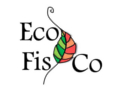Emissions of carotenoid cleavage products upon heat shock and mechanical wounding from a foliose lichen
- Authors:
- García-Plazaola JI, Portillo-Estrada M, Fernández-Marín B, Kaanaste A, Niinemets Ü
- Year:
- 2017
- Journal:
- Environmental and Experimental Botany
- Volume:
- 133
- Initial page - Ending page:
- 87 - 97
- ISBN/ISSN:
- 0098-8472
- Description:
-
Carotenoids constitute a major target of chloroplastic photooxidative reactions, leading to the formation of several oxidized derivatives and cleavage products, some of which are volatile (VCCPs). Among them, beta-cyclocitral (beta-CC), at least, is a retrograde signaling molecule that modulates the activity of many key physiological processes. In the present work, we aimed to study whether beta-CC and other VCCPs are released into the atmosphere from photosynthetic tissues. To overcome stomatal limitations, the foliose chlorolichen Lobaria pulmonaria was used as the model system, and the emissions of biogenic volatiles, induced by heat and wounding stresses, were monitored by proton-transfer reaction time-of-flight mass spectrometry (PTR-TOF-MS) and gas-chromatography (GC-MS). Prior to stress treatments, VCCPs were emitted constitutively, accounting for 1.3% of the total volatile release, with beta-CC being the most abundant VCCP. Heat and wounding stresses induced a burst of volatile release, including VCCPs, and a loss of carotenoids. Under heat stress, the production of beta-CC correlated positively with temperature. However the enhancement of production of VCCPs was the lowest among all the groups of volatiles analyzed. Given that the rates of carotenoid loss were three orders of magnitude higher than the release rates of VCCPs and that these compounds only represent a minor fraction in the blend of volatiles, it seems unlikely that VCCPs might represent a global stress signal capable of diffusing through the atmosphere to different neighboring individuals.

